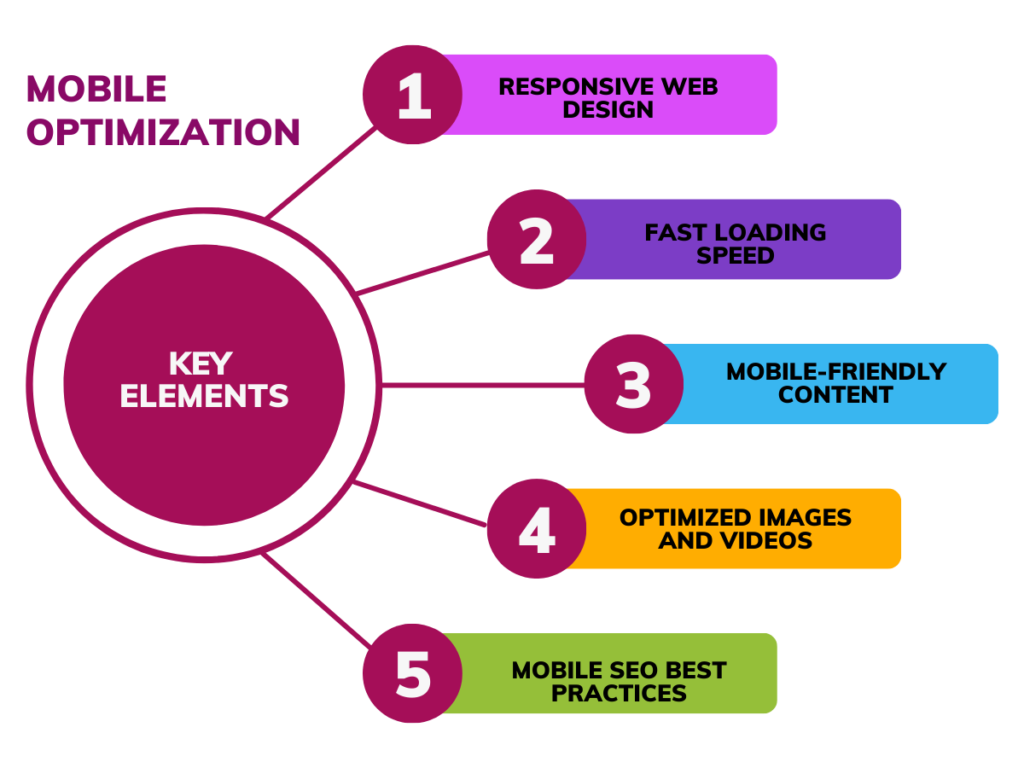Mobile optimization has become an important process of On-Page SEO. Most of the internet traffic is generated by mobile devices, so mobile optimization plays an important role in increasing search results. To optimize your websites for smartphones and tablets, businesses and website owners must consider factors like attractive and unique content, page loading speed, etc. Without a proper mobile SEO site risks a loss of visitor engagement and eventually affects their businesses.
To build your website mobile-friendly, you should have basic knowledge of Mobile Optimization.
What is Mobile Optimization?
Mobile optimization in digital marketing involves designing, structuring, and unique content adjustments to ensure a website performs well on mobile devices. Websites that are mobile-friendly load quickly, are responsive and are easy to use on smaller devices. Google has made mobile SEO a ranking factor, meaning a website that performs slowly on mobile devices is less likely to appear in top search results.
Why Mobile Phone Optimization Matters
- Improved Search Rankings: A well-structured or mobile-optimized site attracts more visibility and organic traffic. That is why Google prioritizes mobile-friendly websites to increase user experience which helps in improving search ranking.
- Better User Experience: Visitors always prefer smooth-running websites. If a website takes more time to load on mobile devices, people don’t stay longer. In that case, it increases the bounce rate of your website and reduces the engagement of your website.
- Higher Conversion Rates: Many people use their phones to browse and purchase a product. If your website is mobile-friendly then it will definitely increase your conversion rates.
Key Elements of Mobile Optimization

- Responsive Web Design: Responsive web design means your site is beautifully adapting to different screen sizes and resolutions. This approach helps improve the readability of your website on different devices.
- Fast Loading Speed: Every user nowadays is very busy, so they don’t wait too long to load your site. Therefore make sure to optimize images, compress your data, and remove unnecessary scripts to ensure quick load times on mobile devices.
- Mobile-Friendly Content: Easy-to-click templates, readable content, and attractive web design have improved readability and attracted more users in recent days.
- Optimized Images and Videos: make sure to optimize your images and videos properly to improve the speed of your website.
- Mobile SEO Best Practices
- Use a mobile-first approach when designing websites.
- Optimize meta tags and headers for mobile search.
- Ensure proper phone optimization by testing performance on different devices.
- Use structured data to enhance search engine understanding.
How to Check Mobile Friendliness
Google provides various tools like Mobile-Friendly Test and PageSpeed Insights to analyze a website’s performance on mobile devices. Regular checking on your website and updating your content as per requirements are essentials to optimize your website on mobile devices.
Conclusion
Due to the high increase in mobile users, mobile optimization is no longer optional—it is an essential process. By focusing on mobile SEO business owners can improve visibility, higher conversion rates, and reduce bounce rates. A mobile-optimized website helps to improve your success rates for the long term

